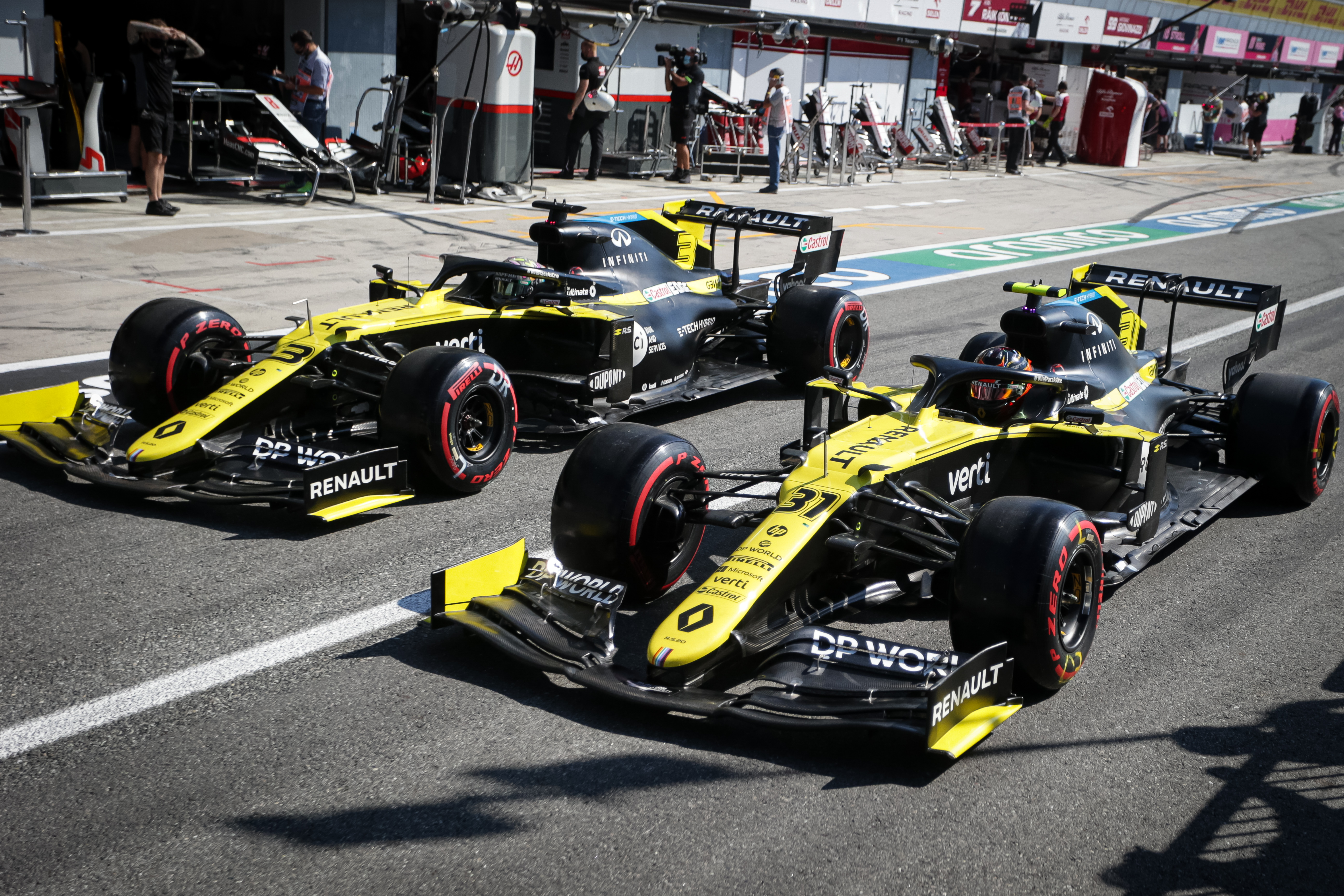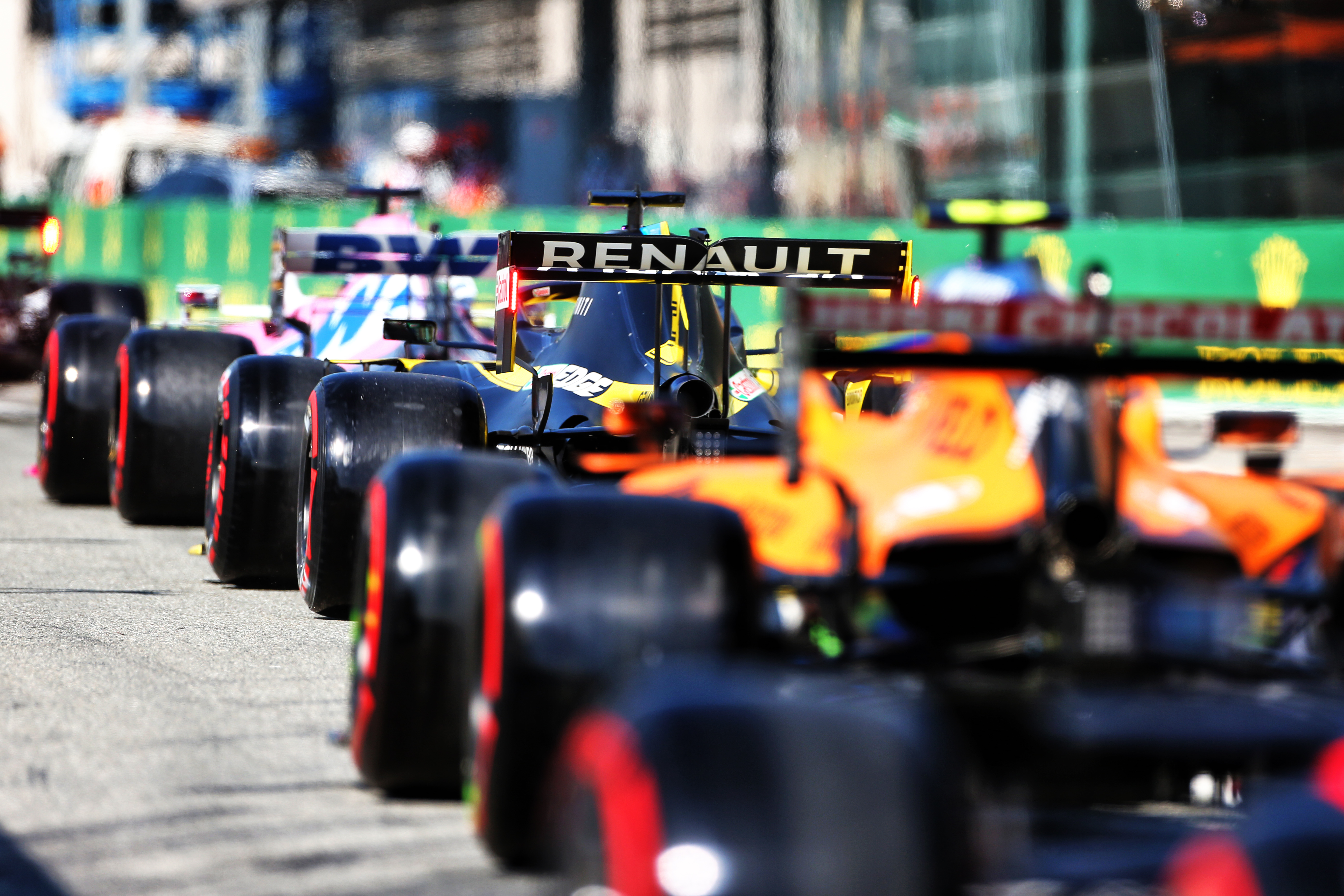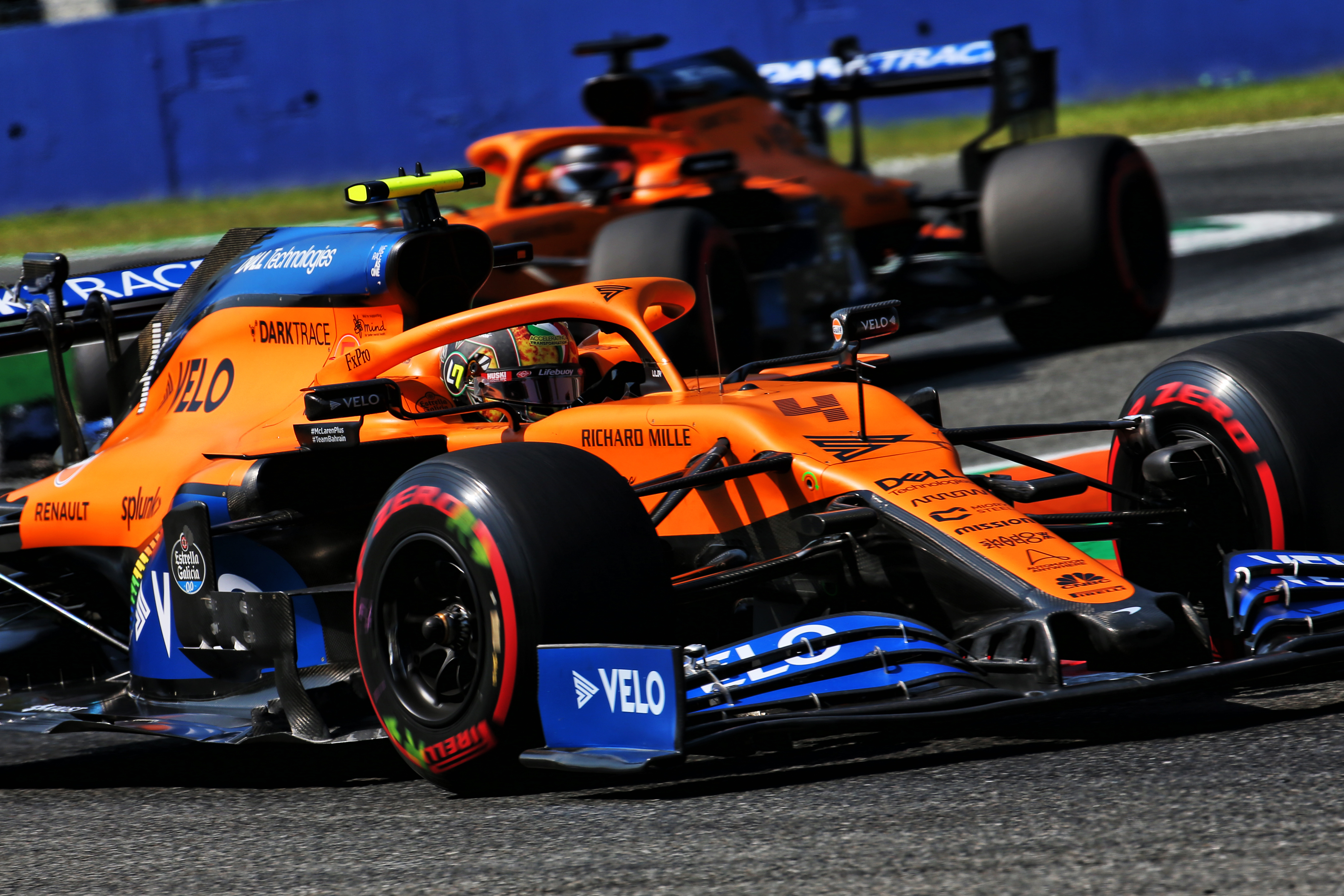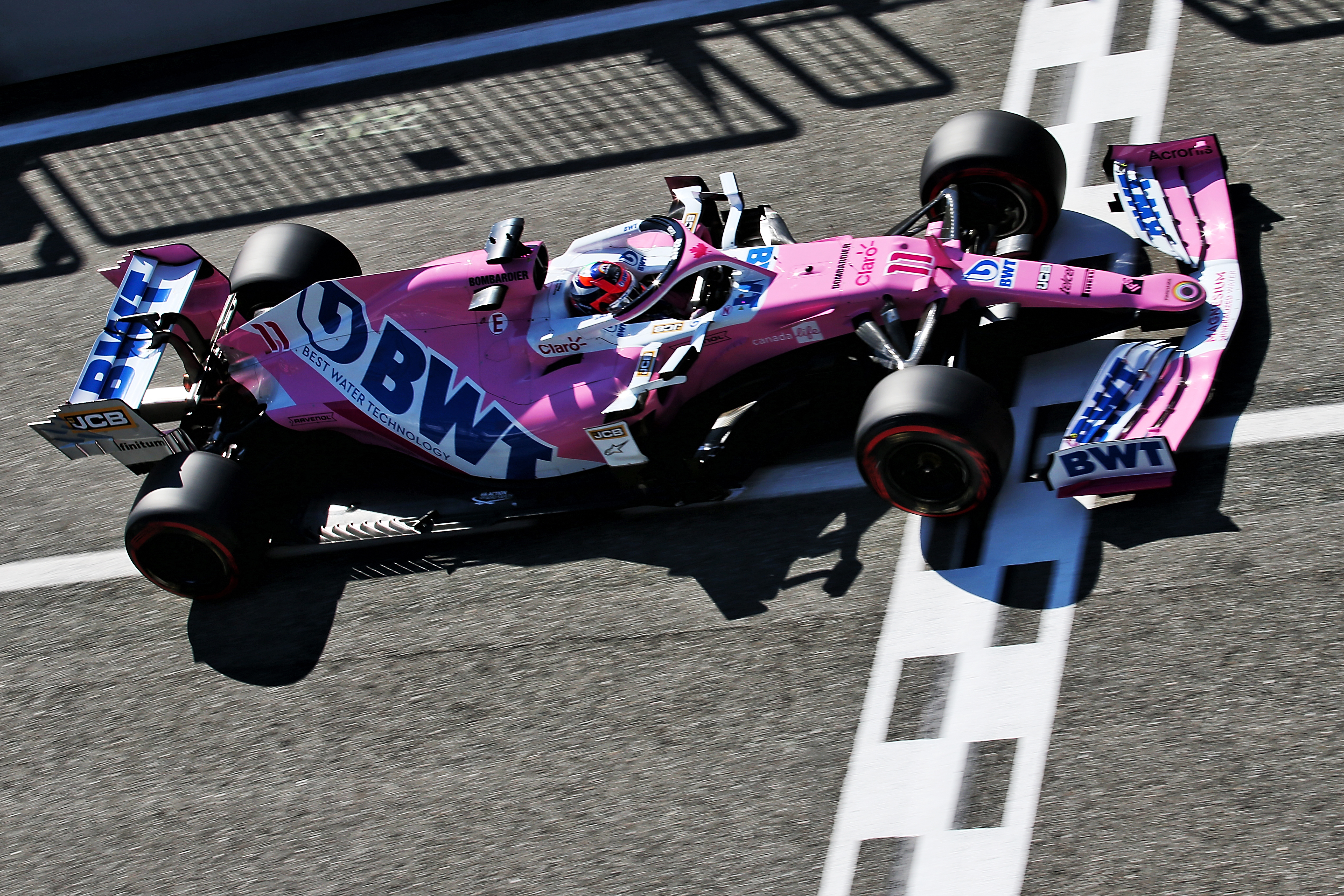Having slotted two cars into the top five on race day at Monza last year, Renault has returned this year to what should logically stand as a happy hunting ground – especially following a best-ever points haul at Spa, made possible by a star performance by Daniel Ricciardo, that seemed to suggest that the R.S.20 has retained the low-drag mastery of its predecessor.
But while the French manufacturer’s Italian Grand Prix qualifying haul of seventh and 12th for Ricciardo and Esteban Ocon respectively is hardly embarrassing, it also must be seem as a disappointment given the context. Even more so that Renault’s sole engine customer team McLaren qualified ahead of the two R.S.20s with both Carlos Sainz Jr and Lando Norris, and emerged as the nearest challenger to runaway leader Mercedes.
So, what happened to Renault? It was perhaps simplistic to reason that if low-drag was the car’s strength, then Monza should suit it even better than Spa. Certainly, it was an assumption that team principal Cyril Abiteboul was already cautious of after Friday practice.

“I think Spa was probably one of our best tracks from a characteristic perspective,” he said. “Monza should be OK-ish.
“I’m not particularly excited by what I have seen this morning. So again, let’s remain extremely focused and continue the work and more importantly let’s try to have a car that is a bit more consistent across the different tracks. It’s only through that condition that we will be able to progress into the championship.”
So, just why did those low-drag strengths not fully translate around the elongated Italian track? “We lost a bit in qualifying [compared to Spa],” said Ricciardo. “The front end and the tyres just not quite there. It’s close, we’re still in the mix. There’s only a tenth-and-a-half between third place and us.
“But generally I think that as everyone has moved to an even lower downforce level here we don’t have as big a drag advantage as at Spa and if you look at McLaren maybe they’re not losing as much to us down the straights as they are gaining through the Lesmos, Ascari and Parabolica. I think that’s why they’ve had the edge on us here.”
A look at the speed trap throws up the following data in kilometres per hour:
| Finish line | Speed trap | Km/h gained | ||
| Esteban Ocon | Renault | 319.7 | 349.0 | 29.3 |
| Daniel Ricciardo | 316.0 | 342.9 | 26.9 | |
| Carlos Sainz Jr | McLaren | 317.6 | 338.0 | 20.4 |
| Lando Norris | 319.2 | 339.1 | 19.9 |
The finish line comes early after exiting Parabolica, while the speed trap is further down the main straight. Therefore, the two Renault-powered cars are exiting onto the straight at similar speeds but the Renault is gaining as much as 10kph more between there and the speed trap.
Ocon is second-fastest through there (to Antonio Giovinazzi’s Alfa), Sainz and Norris 15th and 17th respectively. Yet Sainz has qualified 0.169s faster than Ricciardo. The gains are therefore under braking and corner entry – downforce, in other words.
But Ricciardo hasn’t given up hope for tomorrow and is taking encouragement from promising form in the long runs of Friday practice. “There’s very little in it between Carlos and me on race pace. I’m not convinced it’s going to stay line-astern in grid order.” Two cars with similar race pace but one of them faster at the end of the straights… there is some logic behind Ricciardo’s optimism.

Still, McLaren’s standout qualifying was a milestone, for Sainz in particular. It only matched his career-best qualifying effort as he was also third in qualifying for the Styrian Grand Prix. But that was in the wet, whereas this was in more representative dry conditions.
Sainz was 0.808s (1.024%) off Lewis Hamilton’s pole position time, the closest that McLaren has been to the front – although at Spa last weekend Sainz was only 1.171% down despite being only seventh in qualifying. Lando Norris also showed how strong the car was at Monza by setting the sixth-fastest time despite admitting to making too many mistakes on his best lap.
Sainz described the “more robust” aero of the car at low downforce, with the reduction of the wing for straightline speed having less of a negative impact on handling than it did last year. This, combined with the braking strength of the car that was not as important at Spa, ensured he was high in confidence, allowing him to put in a strong Q3 lap that put him just at the front of the gaggle of cars behind Mercedes. Had he been even two-tenths slower, he would have been down in seventh.
“Exactly the reasons we still don’t know,” said Sainz when asked to explain why the aero characteristics are well-suited to Monza. “I’ve been in the meeting now giving some feedback to the engineers for them to analyse why the car is this weekend looking a bit more competitive than in Spa and why the feeling with the car is just that tiny bit better that it immediately puts you at the front of the midfield.
“Obviously I’m feeling confident. This is a very confidence-biased track where you need to trust the car moving around a bit more with the lower downforce, you need to trust arriving at those big braking zones at 330-340km/h and hitting the brake pedal is as hard as you can to stop the car, you need confidence.
“The car is well-balanced, it’s giving me that braking confidence and that entry stability that I’m very keen on and has allowed us to put a very good lap in Q1 and then to evolve rapidly through qualifying.”

Sainz compared the car favourably to how it felt last year, when on similar low-downforce trim it didn’t give the same confidence.
At Monza last year, he was the lead McLaren in seventh place in qualifying but lapped 1.148s (1.448%) off the pace before retiring with a loose wheel after a pitstop blunder. Team-mate Lando Norris finished 10th.
“Last year, whenever we went lower-downforce, the car felt extremely loose and difficult to drive,” said Sainz.
“This year, it looks like we are just taking off rear wing and we are not losing extra downforce and it’s definitely helping us in places like Spa and at more extreme Monza where we are running very, very low downforce.
“That plus being able not to not to lose too much downforce with this rear wing that we are running means that we are probably just a bit more comfortable and a bit more in the window of where we want to be.
“We’ve always been strong under braking so that’s not news, but the downforce holding on a bit better with lower rear wing angles is definitely a factor.”

McLaren did also beat Red Bull and Racing Point, but was only just ahead of the latter – as Sergio Perez was fourth-fastest and just 0.025s slower than McLaren despite having gone into qualifying with low expectations.
After Friday practice, technical director Andrew Green had admitted his team was in “damage limitation” mode, having struggled to replicate the good balance of the car in the first part of the season on low downforce either at Spa or in Friday practice at Monza.
But overnight set-up changes improved the car to the point where Perez could qualify strongly and outpace the Red Bulls and the Renaults.
“We were really not expecting this performance in qualifying,” said Perez.
“If anything we’ve been focusing a lot through the race because we thought our pace didn’t look that great so we are definitely in a great position for tomorrow.”

